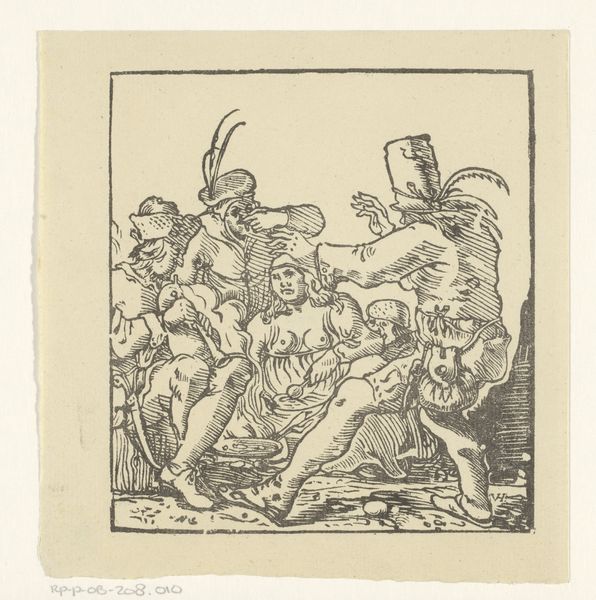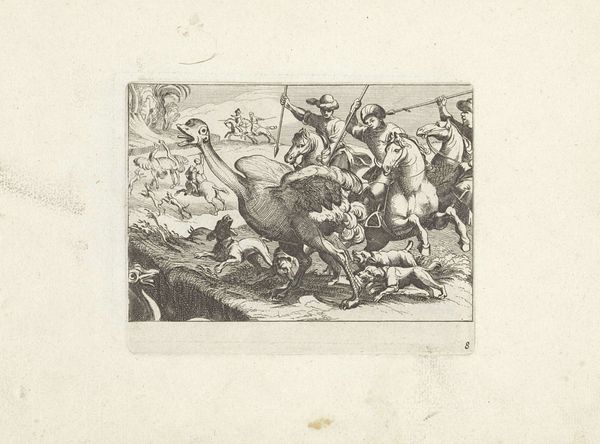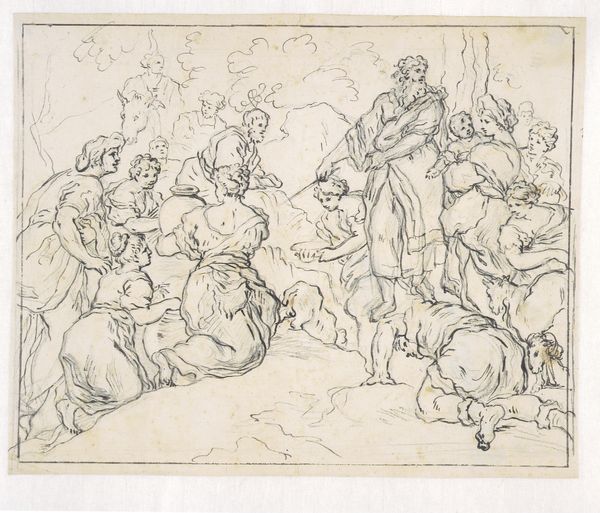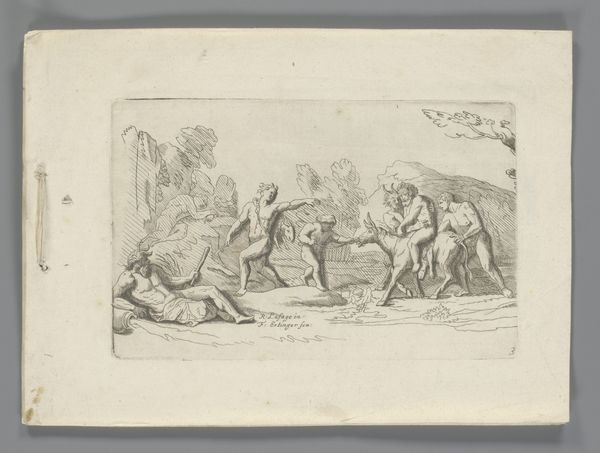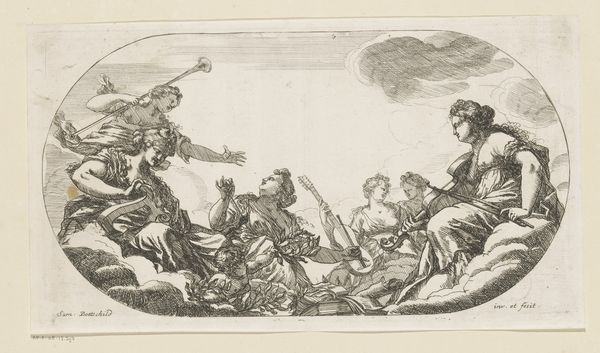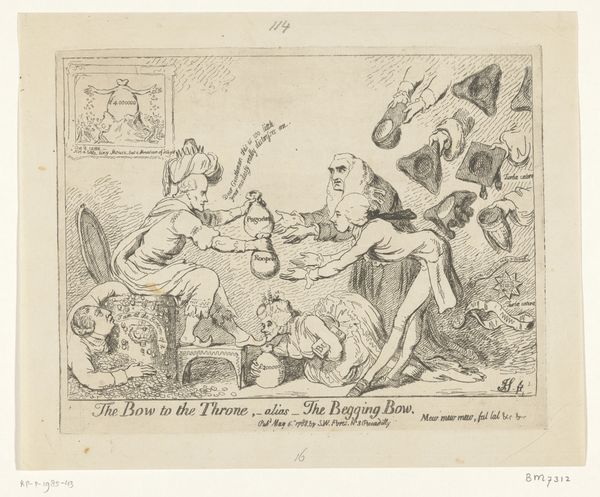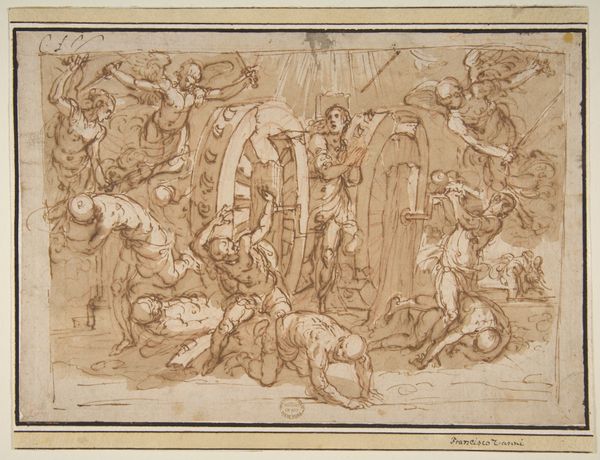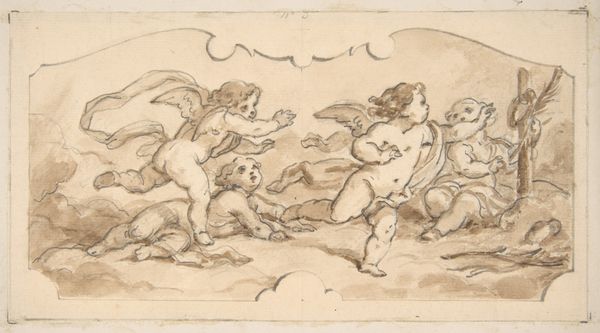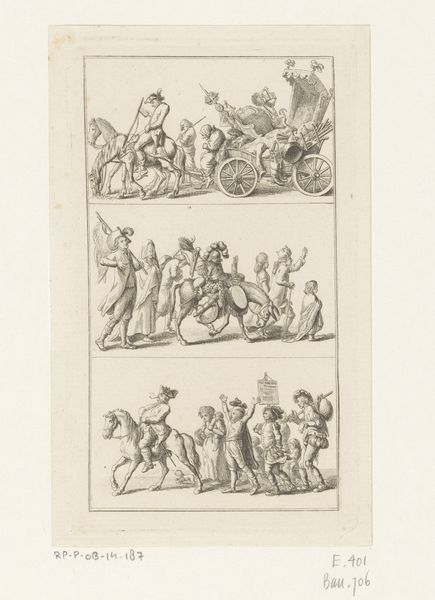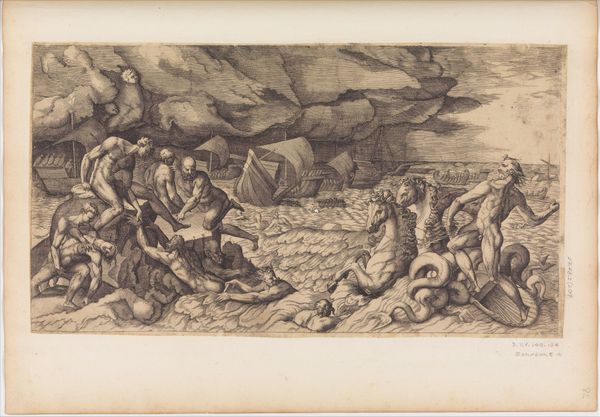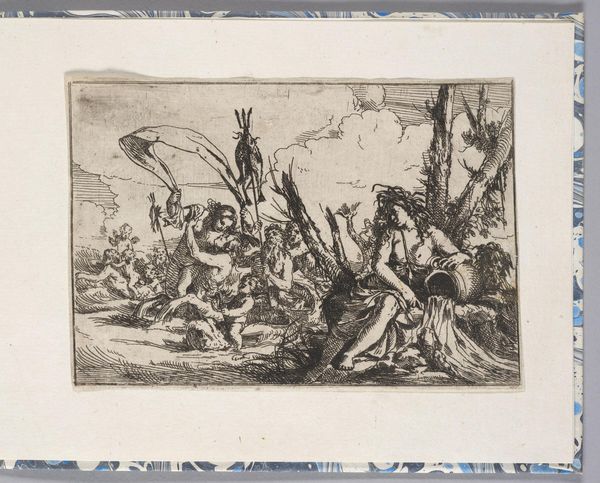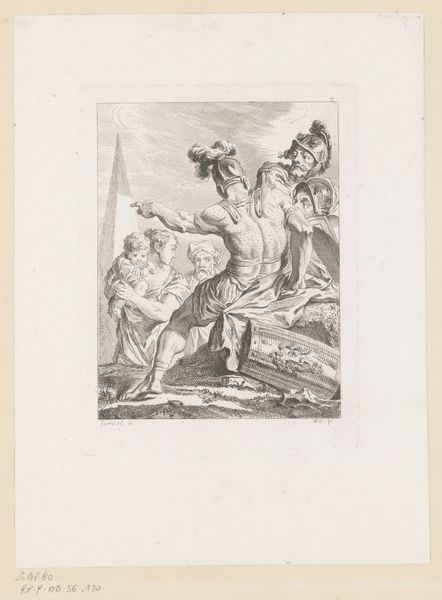
Dimensions: height 253 mm, width 373 mm
Copyright: Rijks Museum: Open Domain
Curator: This drawing, titled "Gevangenneming van Simson door de Filistijnen," or "The Capture of Samson by the Philistines," was created in 1782 by Adam von Bartsch. It’s housed right here at the Rijksmuseum. Editor: It’s incredibly energetic, isn't it? The flurry of lines captures a sense of chaotic movement—a real struggle unfolding. Almost looks like sketches of movement tests you would use in modern animation. Curator: Exactly! It depicts a pivotal moment from the Old Testament. The Philistines, having learned of Samson's weakness for Delilah, ambush him, cutting his hair – the source of his strength. This preparatory drawing, executed in pen and ink, really lets you see the means of production: how the artist thought through constructing the moment, figure by figure. Editor: And what a brutal capture! The focus feels totally centered on the physical domination and power relationships involved, with several men bearing down to hold down the prone figure. It highlights not just Samson's fall from grace, but also a very direct form of physical subjugation in terms of the composition, even as a religious narrative. Curator: Definitely. The Baroque influence is quite evident; Bartsch uses the pen to create dramatic tension, especially evident in the musculature of the figures. Each is positioned in an intense, twisting pose that amplifies the sense of struggle, like those scattered fallen figures to the right almost falling out of the plane of action. Editor: You know, focusing on it now from a Materialist perspective, it also kind of makes me think about how these depictions can unintentionally glorify violent subjugation, no matter the intention. And that act of transcription from mental intention into a finished composition feels loaded when rendered here through class dynamics... Curator: An interesting observation! Ultimately, "The Capture of Samson" not only showcases Bartsch's technical skill with ink but also invites reflection on themes of betrayal, power, and the human condition itself. It also makes you feel a tiny bit sorry for poor Samson. Editor: Indeed. Leaving one to question: at what cost do we find art that moves and emotionally connects, if that experience is, shall we say, gained at a fraught expense? Food for thought.
Comments
No comments
Be the first to comment and join the conversation on the ultimate creative platform.
